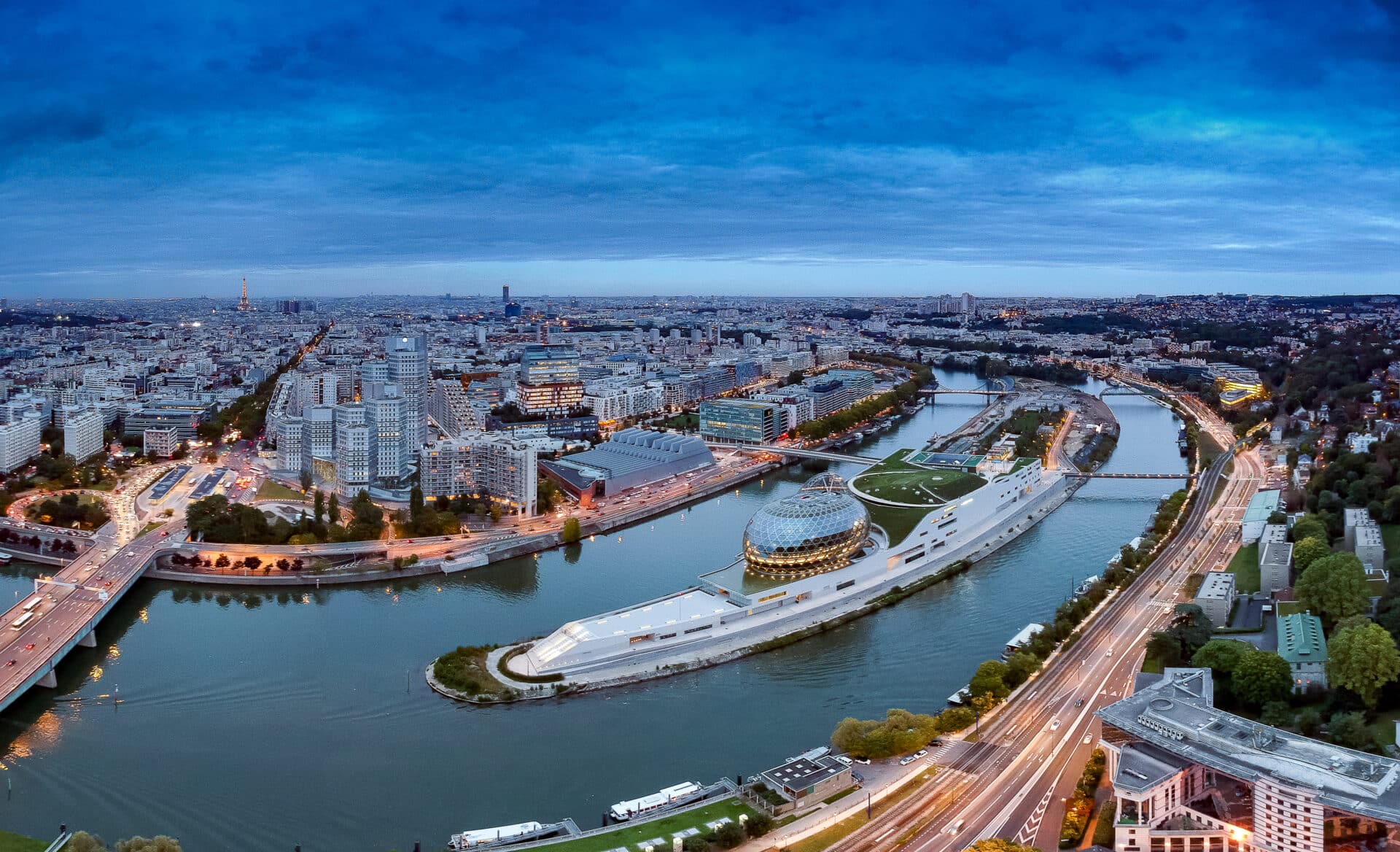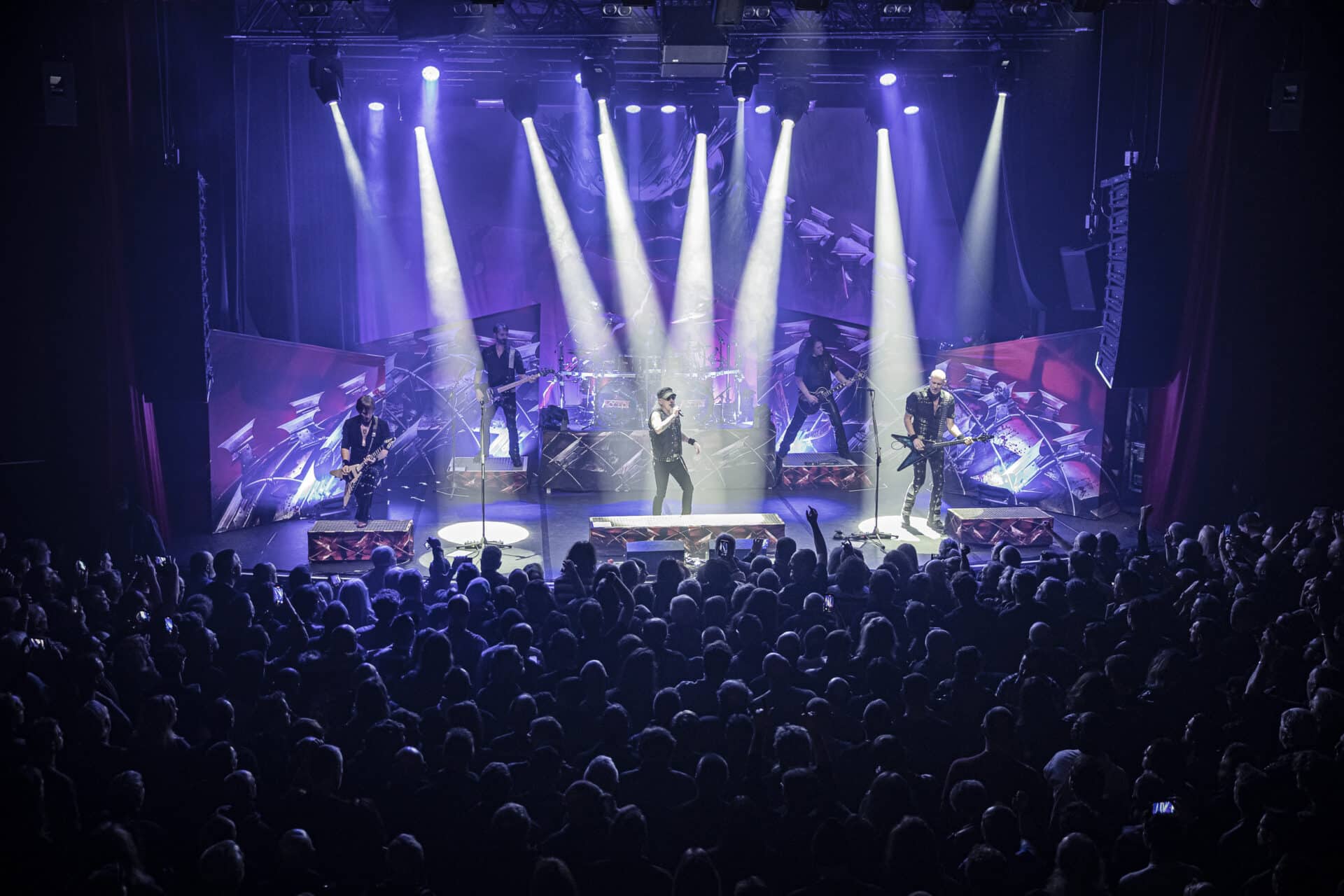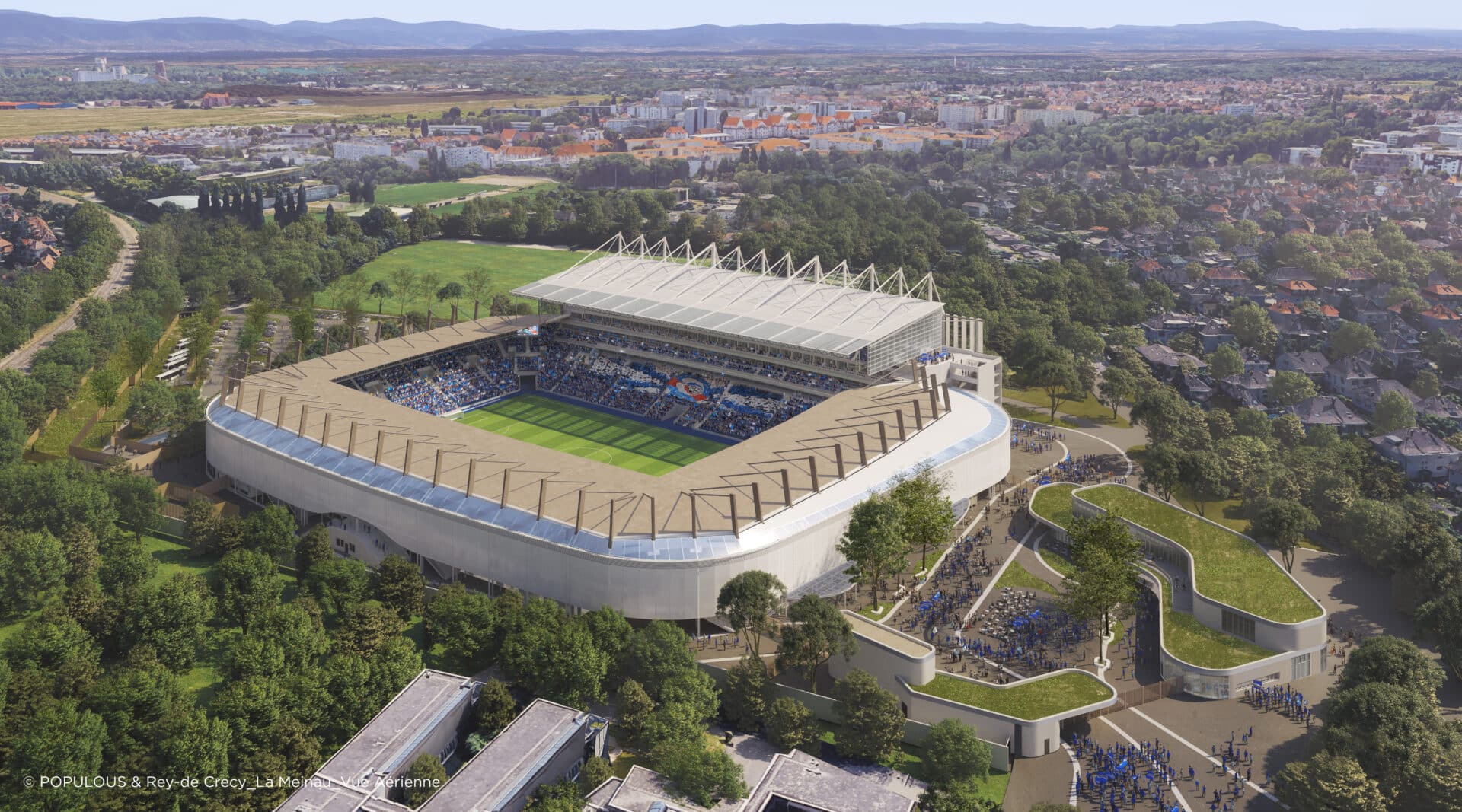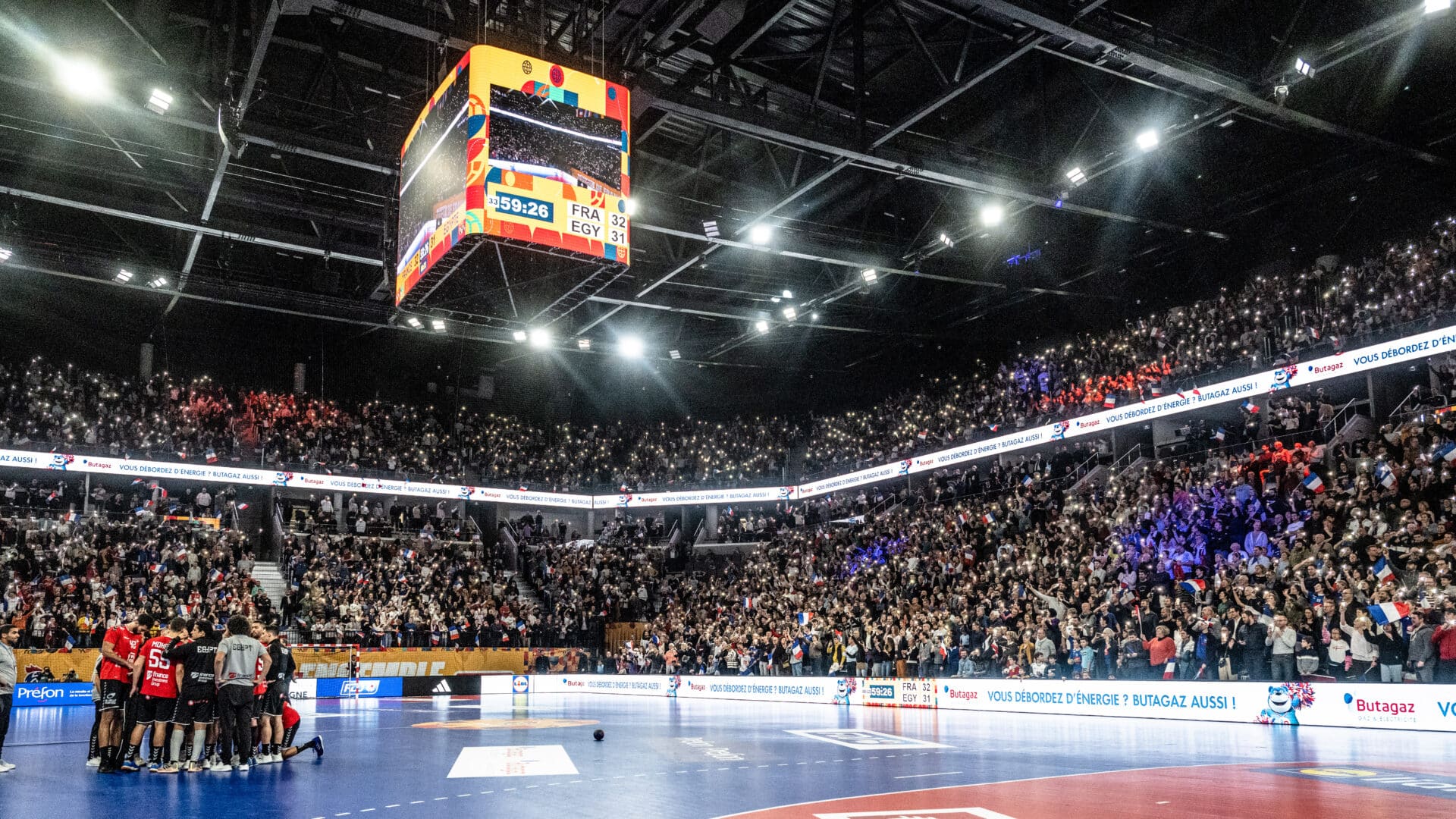
RIVER VIEW: La Seine Musicale opened in 2017 right in the middle of the river Seine, boasting two auditoriums, the Grande Seine at 6,800 capacity, and the all-wooden 360-degree Auditorium. (Nicolas Grosmond)
Buildings make the nightlife circuit, and thanks to its entertainment venue infrastructure, France boasts one of the best circuits in Europe. The bulk of business is still centered in and around the capital of Paris, but the surrounding regions and provinces are catching up.
Many residents are leaving Paris in search of cities that are less congested, cheaper and generally offer a higher quality of life. These locales include Lyon, Bordeaux, Toulouse, Montpellier and Nantes. They hardly offer the variety of clubs, theaters and arenas that Paris is known for, but that’s changing.
Montpellier has had a 14,000-capacity arena since 2010, and the Zénith in Toulouse officially has 11,000 capacity. In Lyon, Live Nation and OL Groupe are developing the new 15,000-capacity Lyon-Decines Arena that will host about 100 concerts and events per year once it opens at the end of 2023.
And since the French, like most Europeans, love soccer, there’s a stadium in every city. Live Nation alone has 20 stadium shows scheduled in France in 2023. This includes two nights of Metallica at the Stade de France in Paris; Red Hot Chili Peppers at Lyon’s Groupama Stadium (50,000 capacity); Beyoncé at the Orange Velodrome in Marseille (60,000 capacity); and Bring Me The Horizon at the Zénith de Toulouse. The Weeknd will perform at Allianz Riviera stadium in Nice, Matt Atlantique will play Bordeaux in addition to Paris, Depeche Mode will perform at Stade Pierre Mauroy in Lille, plus Lyon, Paris, and Bordeaux. Meanwhile, Imagine Dragons are to perform at Chambord, a castle in the middle of France, in addition to their Paris shows at La Défense Arena.
“France is not just Paris,” said Live Nation France managing director Angelo Gopee. He said France is the country offering the best venue infrastructure outside its capital.
Matthieu Drouot, president and CEO of Gérard Drouot Productions, said, “Compared to other territories, France has lots of venues of all sizes, clubs, theaters, and amphitheaters.” Still, there’s work to be done.
“I have a tour with progressive rock and heavy rock acts Haken and Between The Buried And Me in March, and I have a sold-out show in Nantes in a small 300-capacity club, and I don’t have options to move up,” Drouot said. “There’s only one other venue in Nantes called Stereolux, which I would have liked to move up to, but they’re not available on the dates.”
Paris stands out, of course. From small clubs like La Maroquinerie, New Morning, and La Cigale to rock venues like the famous Bataclan to arenas like Accor Arena to stadiums like Stade de France — artists and their teams are spoiled for choice. There’s also a unique building sitting right between arenas and stadiums in terms of capacities: Paris La Défense Arena. With a maximum indoor (yes, indoor) capacity of 43,000, and a flexible draping system that allows promoters to go as low as 10,000 seats, it offers flexibility in a range not many buildings can accommodate. It’s a great option for artists unsure about selling out an 80,000-seat stadium. Instead, they could consider doing two nights at La Défense Arena, one at maximum capacity, and one at 50% or 60%. The building’s modularity can make sure it looks sold out in multiple configurations. It works from the other end as well, of course, allowing promoters to add 1,000 or 2,000 more seats for artists that would easily sell out an arena.
Arena president and CEO Frédéric Longuépée explained, Paris La Défense Arena, which opened in 2017, was built with entertainment first and sports second in mind. Even though it serves as the home turf for Paris rugby club Racing 92, the team will gladly make room for concerts. For example, Bruce Springsteen will take over the arena for two nights, May 13 and May 15.
“It’s an entertainment venue welcoming rugby and conventions, in that order,” Longuépée explained, adding that “the economy is on the entertainment side, not on the sports side.”

Onward And Upward: Le Bataclan rock club, pictured during a gig from German metal band Accept, has mostly moved on from the horrific terrorist attack of 2015. (GregH Photographer)
The capital’s state-of-the-art arena is Accor Arena, formerly known as the Palais Omnisports de Paris-Bercy, which has played host to everybody who is anybody in its rich history beginning in 1984. Today, the building is part of Paris Entertainment Company (PEC), which also runs Le Bataclan, and adidas Arena, set to open in time for the 2024 Paris Olympics. At 9,000 capacity, the plan is to host more than 100 events per year with a mix of sports, e-sports and music throughout the year. Paris Basketball will be adidas Arena’s sports tenant. It marks the first naming rights deal for adidas worldwide, which showed how important urban culture and music were to the positioning of major brands, according to Nicolas Dupeux CEO of PEC. Despite supply chains still recovering from COVID effects, which includes the prices and availability of materials, Dupeux is confident that the arena will open next February, as scheduled.
Meanwhile, Accor Arena is being turned into a proper entertainment district that can welcome visitors all day. The offering includes a new bar and restaurant, as well as co-working spaces for professionals. A public basketball court just opened, and in July, Dupeux’s team will host an outdoor cinema for the first time. In addition, a new 3,500-capacity venue inside the main building will expand the type of events that can be held at Accor Arena.
“Our district is now open to the public every day, at every hour, even if there’s no concert or sports match,” said Dupeux. He sees PEC uniquely positioned in France and wider Europe, offering Accor Arena, a 20,000-capacity arena with the ability to go as low as 8,000, adidas Arena, which can host between 3,000 and 9,000; and Le Bataclan, covering the lower end of the spectrum (up to 1,500 capacity).
Speaking about how far the Bataclan has come since the terrorist attack seven years ago during an Eagles of Death Metal gig, Dupeux said, “It was very important for us to write a new story for the venue, to move firmly towards the future without forgetting the past. We wanted to position Le Bataclan as the premier destination for rock in Paris, seeing that it embodies the spirit of rock: freedom, audacity, and impertinence.”
Dupeux said the ornate building has managed to move on. “What we find is that our customers now are 18 to 20 years old” and weren’t keenly aware of the horror taking place at the time. “They know what happened, but they don’t have the same images in their heads as you and I have.”
From a design perspective, one can’t discuss Parisian venues without mentioning La Seine Musicale, which opened in 2017 on Île Seguin right in the middle of the river Seine. It sits like a gigantic ocean liner, boasting two auditoriums, the Grande Seine at 6,800 capacity, and the all-wooden 360-degree Auditorium, both designed with acoustics in mind.
Artists arrive at the venue by boat, crossing the Seine, which is all part of the experience-driven philosophy that shapes the building. Visitors can bring their kids, who will enjoy learning about sound in the Seine Lab, which is part of a vast daytime offering. Or they can bring a book to read in the lush gardens that separate the two concert halls. The gardens also serve as the backdrop to any outdoor event at La Seine Musicale, be it a concert or a film screening on the gigantic 823-square-meter LED screen. La Seine Musicale experienced a strong 2022, which, in most cases, surpassed 2019 in terms of ticket sales.
Avails are far and few between, which is good news for a sector intent on making up for lost business. The building’s CEO, Olivier Haber, said, “We are scheduling concerts and shows until 2026, which is unheard of. Before COVID we were planning 18 months ahead, or two years at max, but never three or four.
“We are very excited for 2023 because of all the new kinds of music we’ll be hosting,” Haber added. “New artists bring in new audiences, who will discover La Seine Musicale for the first time. That’s really what motivates us.”

Populous is behind renovations at Stade de la Meinau in Strasbourg, which is being upgraded from 26,000 capacity to 32,000.
(Special Advertising Spotlight)
Anticipating The Needs Of Tomorrow With Populous Senior Principal Francois Clement
By Eamonn Forde
Operating for over 39 years and with over 3,000 projects under its belt in that time, Populous is a leading global architectural and design company, with a team of 800 people split between 24 offices across four continents.
The company says it aims to “design the places where people want to be together” and its client roster includes many of the biggest sports, entertainment and public assembly locations in the world. They work at the cutting edge of architecture, technology and sustainable design.
Francois Clement is Senior Principal at Populous and GM of its France office, having worked at the company for the past 17 years. “We are the global leaders in stadium and arena design,” he says.
By way of illustration, he lists a wide range of completed projects such as the Tottenham Hotspur Stadium, the Climate Pledge Arena in Seattle and the new 10,000-capacity Arena Du CO’Met in Orléans, France, as well as current projects including Co-op Live arena in Manchester (with capacity for 23,500, which will make it the biggest indoor venue in the UK when it opens), and the renovation of the Stade de la Meinau in Strasbourg.
“We are able to provide iconic, integrated solutions for our clients and their fans or customers, using the expertise and international knowledge that we have,” he explains. “We have a huge global knowledge base and we are able to share this knowledge between regions. It’s one of our strengths. We’re not separate offices; we’re one entity.”
It is, he says, the offering of holistic design solutions that makes Populous really stand out. “Not only are we designing the venue and its interior spaces, but we are also able to bring in other elements, like acoustics and audio-visual design. We are also able to approach the business case for a project with our client at the earliest stages through our design-led business planning solution, Populous Consulting.”
Launched last year, Experience Studios is another service within the Populous portfolio, bringing pioneering audio and AV expertise to projects. “It is led by Mark Murphy and Kevin Luckhurst and between them they have 40 years of experience in the fields of acoustics and AV design,” says Clement.“It’s not only being able to play with the tech and all the different speakers that you put in to control the sound, but it’s also being able to design physical spaces that will enhance the quality of the venue acoustics. Doing that also means enhancing the quality of the experience – not just for the spectators, but also for the entertainers, the players and the musicians playing there.”
The same attention to detail and emphasis on the most advanced technologies carries over into the design work around screens within the venues.
“If you have a screen that you can see from 15 meters, that is different from the one that you will see from 30 meters,” he says. “The giant screen or the LED strips you will have in a stadium are different from the ones that you will have in an arena because of the positioning of the audience in relation to the screens. You must ensure that you enhance the quality of the experience based on that.”
Projects, such as a 60,000-seat stadium, can take 10 years from initial discussions and scoping to opening the doors. As such, Populous ensures that the technological and design specifications are future proofed.
Venues must be multifunctional and highly adaptable today – often being required to host a large sporting event one week and a major touring musician the next.
“They have to be able to attract different types of content throughout the year in order to bring added value and additional revenues to the project,” he says of how Populous will work closely with clients to achieve this. “That brings a different level of complexity due to the fact that the different spaces need to accommodate different types of sports or entertainment that will be run in the space. We are talking about modularity here.”
A growing issue in construction in recent years is around the environment and sustainability. There are changing building regulations but also mounting expectations from the public that any new or renovated building will meet certain green standards.
Populous has a global working group for that, tasked with ensuring the practice remains at the cutting-edge of sustainable best practices and operates in the most environmentally conscious manner possible. The practice has also recently appointed a global head of sustainability to drive that strategy across projects and oversee all activities here.

The 10,000-capacity Arena Du CO’Met in Orléans, France, opened in January.
Clement says this is merely the public manifestation of efforts that have been put in place by Populous for most of the past two decades, with a clear commitment to sustainability, recycling and upcycling.
“When we built the Aviva Stadium in Dublin 18 years ago, we demolished the old Lansdowne Road and all the rebars were recycled and all the concrete was broken down to be used as infill during the three years of construction,” he notes. “So for three years, no trucks had to come with infill during the construction. This is really important. We were also using different types of products, including different types of concrete, that are made in a much more sustainable way in order to have a better impact on the environment.”
He also references the current work in Strasbourg, upgrading a 26,000 capacity venue to become a 32,000 capacity one, where sunshades for the venue will be made from disused portions of fuselage from 20 Airbus A340s.
“Not only are we upcycling and not only do we have this sustainable way of dealing with the project, we also provide an aesthetic proposal for it,” he says.
Such initiatives are being applied globally. “Our new global head of sustainability is coordinating the learnings from the different regions,” reveals Clement. “What is happening in Australia is different from what is happening in London, Paris or Kansas City – but that knowledge could be reused or lead to different types of proposals.”
Tied to all of this is an emphasis on ensuring that large venues contribute to and support the local communities, with that requirement shaping the design and construction processes.
Clement gives the example of the new Fulham FC stadium in London to illustrate this process in action.
“We are about to complete the Riverside Stand at Craven Cottage, which is a beautiful stadium that addresses the bend of the river in Putney,” he says. “It’s an exceptional project that reopens the river path between Putney and Hammersmith. On match days, that open space is enclosed and becomes an outside concourse. It is about multiplicity of usage of the spaces, turning what is a public space into a private space for the duration of the game, but then reopening it to the public. It is also providing new amenities to the local community.”
The same approach is being taken with the Strasbourg project. “The new Fan Zone is a space just outside the stadium and on non-match days it will be a public space for the local community; then on match days it will be enclosed, creating an activation space,” he says.
While there are guiding principles around design and the environment on all projects, Clement says Populous ensures that each project is unique and tailored to its specific location.
“All of our projects are different because we are addressing different clients and different communities,” he explains. “With Co-op Live in Manchester, for example, we are talking about different populations that will come in. There are people who are from around Manchester but also people who will travel from surrounding areas and even from London – and we need to cater for everyone. We need to cater for the people that are coming to experience something that is completely different and unique. We cannot take an arena that has been designed in London and replicate it in Manchester. It’s a different type of usage.”
In terms of future trends and directions, Clement says digital is having a huge impact, especially from the perspective of the audience.
“The trend in architecture is obviously around the new digital world,” he says. “That goes alongside the sustainability issue. How can we design in a different way? We are deeply involved in all the e-sports developments. Digital technology allows us to work differently and reflect that work better to our clients, but it has also opened a new set of possibilities through AI and digital twinning: how to design spaces where the spectator or the supporters could, through digital, be part of the game and become an avatar in the experience.”
He says the most unexpected factor impacting on current design is the post-COVID experience.
“We’ve realized over the past three years that COVID has modified the way people are interacting with each other,” he explains. “We saw on reopening venues that people are even more hungry to come together at large events with others who share their passion – be that sports, music, live entertainment. And they want to spend more than just 90 minutes at the game or the gig – they want to arrive earlier, spend more time there and then leave later.”
What a venue is and how it operates has changed significantly in recent years and what drives Populous forward is not just creating spaces for the needs of today but also anticipating the needs of tomorrow.






